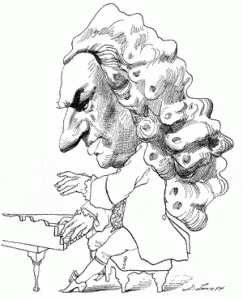George B. Stauffer at the NYRB:
 Around 1730 Johann Sebastian Bach began to recycle his earlier works in a major way. He was in his mid-forties at the time, and he had composed hundreds of masterful keyboard, instrumental, and vocal pieces, including at least three annual cycles of approximately sixty cantatas each for worship services in Leipzig, where he was serving as St. Thomas Cantor and town music director. Bach was at the peak of his creative powers. Yet for some reason, instead of sitting down and writing original music, he turned increasingly to old compositions, pulling them off the shelf and using their contents as the basis for new works.
Around 1730 Johann Sebastian Bach began to recycle his earlier works in a major way. He was in his mid-forties at the time, and he had composed hundreds of masterful keyboard, instrumental, and vocal pieces, including at least three annual cycles of approximately sixty cantatas each for worship services in Leipzig, where he was serving as St. Thomas Cantor and town music director. Bach was at the peak of his creative powers. Yet for some reason, instead of sitting down and writing original music, he turned increasingly to old compositions, pulling them off the shelf and using their contents as the basis for new works.
The roots of this change can be traced, perhaps, to the summer of 1726, when Bach decided to incorporate instrumental music written earlier in Cöthen into his third Leipzig cantata cycle, refashioning concerto movements for violin or oboe into a series of inventive sinfonias (orchestral introductions), choruses, and arias featuring solo organ. Here the recycled material remained brilliant filler amid newly composed music.
more here.
